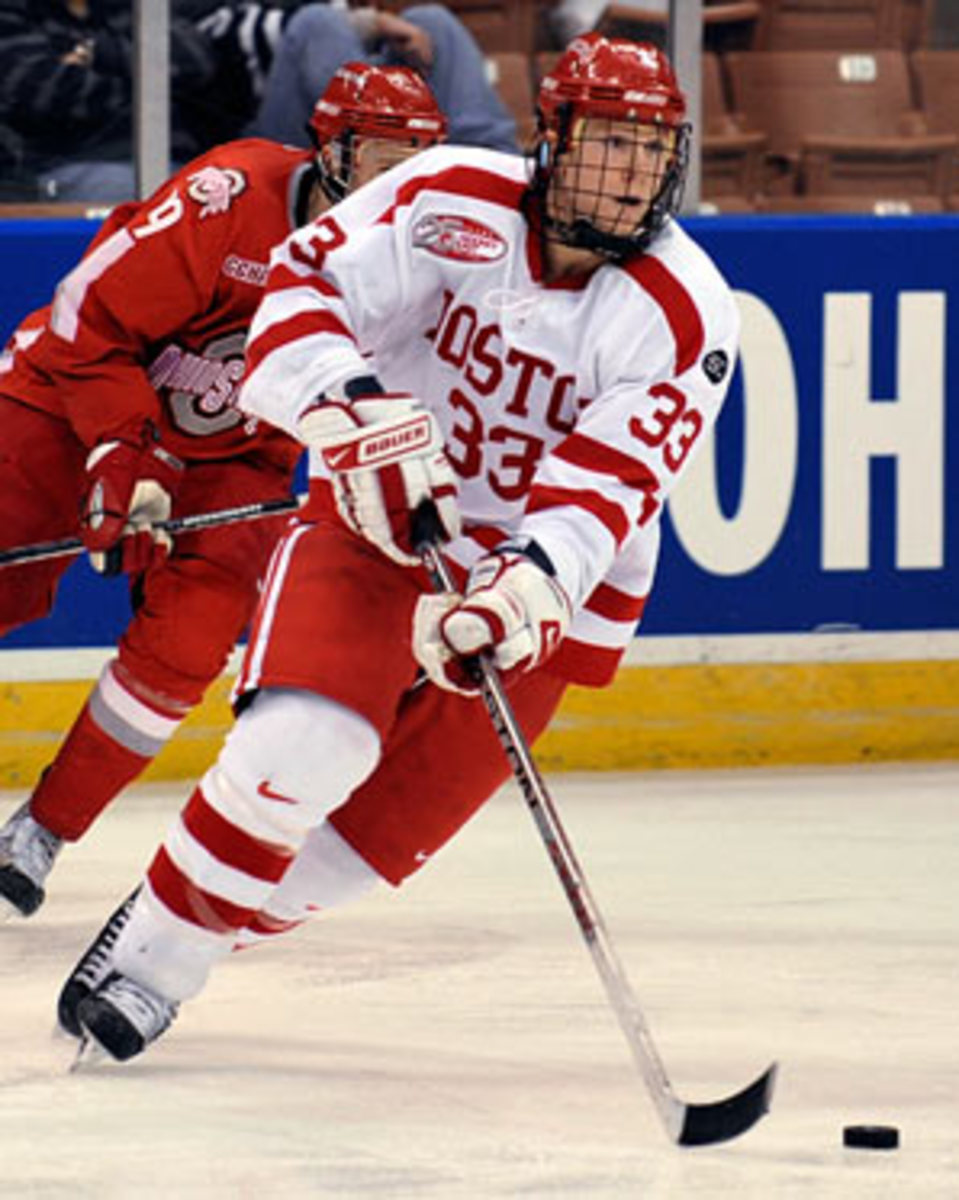All eyes are on the kids in camp
When you attend an NHL training camp, you see a team's entire staff -- from the GM right through the scouts. They spend hour upon hour watching the very players they spent hours and hours watching before drafting and signing them. All of which begs the question: what are they looking for?
After all, it isn't as if training camp is an open audition. There are actually very few spots available on any roster. Most of the slots on the big club are predetermined based on contract status. Almost all of the junior eligible players are in camp to participate in rookie games before going back to their amateur clubs. Most of the first year pros are in for a bit of a longer look -- maybe even suiting up for a preseason game or two -- before being assigned to their respective AHL affiliates.
That leaves the veterans to go on about their own business of getting ready for the upcoming campaign. There are systems to work on. There is the integration of new faces, whether they be free agent signings or guys brought in via trades. That coming-together process is the ultimate focus in camp, but it has little to do with the hustle and bustle of the first week.
All those eyeballs I mentioned up top are scrutinizing the future of the organization. Did a kid improve in the past year, or over his summer workout regimen? Is he getting bigger, faster and stronger? How does he compete? Is there detail to his game? Most importantly, in talking to various scouts, one finds that they're assessing a player's progress in a role that was initially envisioned. Is he on track for his projected "upside" and to fill a necessary role with the big club over the next three-year window?
Some players get to that point sooner rather than later. As I watched Colin Wilson, the Nashville Predators' 2008 first-round pick, perform against his peer group in a couple of rookie games the past couple of days, he looked to be the most NHL-ready player on the ice. Part of it is that Wilson is just physically more powerful that the players his age -- an attribute that will serve him well should he make the jump from NCAA champion Boston University to the Predators.
Beyond Wilson's physical stature, though, his overall game has a maturity to it. He took most key defensive zone face-offs and was on the first penalty-killing unit. He went to the net with conviction and made quality plays in both the open ice and along the boards. Unlike most of the other guys who played in the games the last couple of days, Wilson will suit up for the Predators' first pre-season game. The test is incremental. Can he display the same effectiveness against NHL squads, or at least teams with a sprinkling of NHL talent?
In the Predators' case, they'll be watching to see if Wilson can fit in and make them better. His is a case where the future-watch has been accelerated -- a more common occurrence league-wide with 18-year-olds right out of junior breaking camp as NHL'ers and proving they belong over the long haul. Steve Stamkos, Drew Doughty, Zach Bogosian and Luke Schenn all did it a year ago. All those players, however, were on teams that were rebuilding, and that partly paved the way for their early entry.
Wilson is trying to crack a Preds team that is always competitive, even though they missed the playoffs last season. They are not prone to change. At their best, they are consistently hard to play against. Detractors may characterize them as static and predictable. Wilson would provide some freshness for the frontline. Can he make enough of a contribution to make the Preds playoff-worthy again?
Regardless, the Predators need an infusion of young talent into their forward ranks. That is why GM David Poile's interest in Phil Kessel of the Boston Bruins makes a whole lot of sense. Wilson and Kessel together would be a dynamic duo up front that the Predators could build around for years to come.
It's an interesting consideration... and something worth watching.






